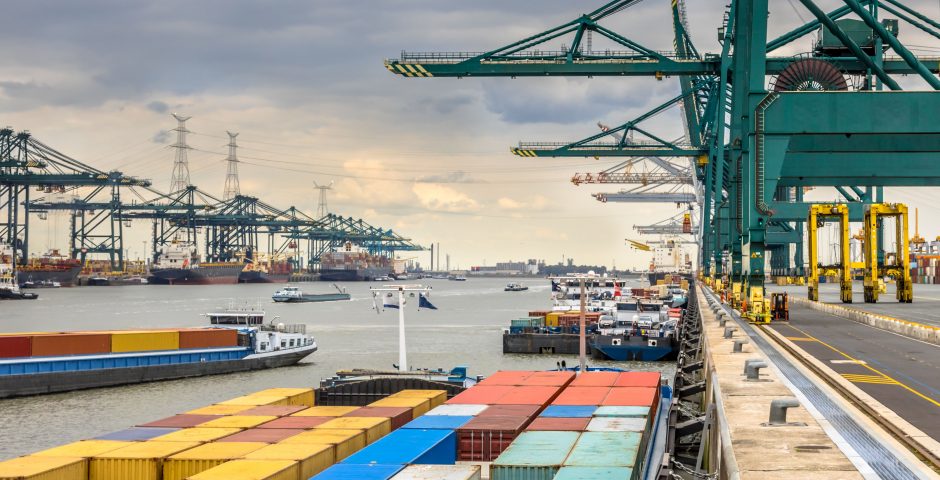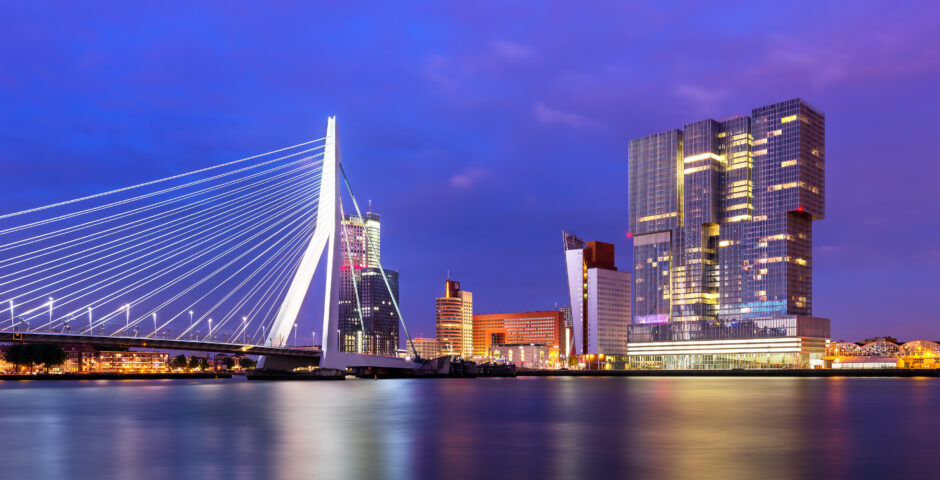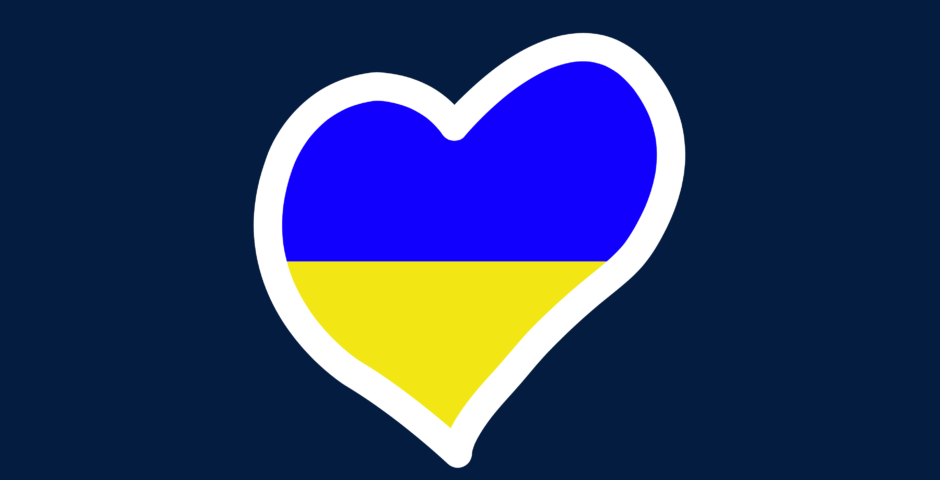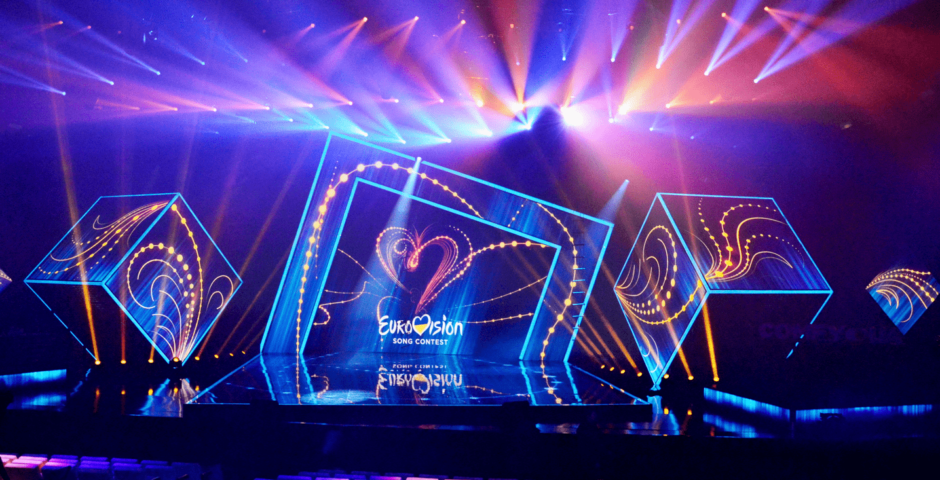Country Profile Lithuania: A Brave Country
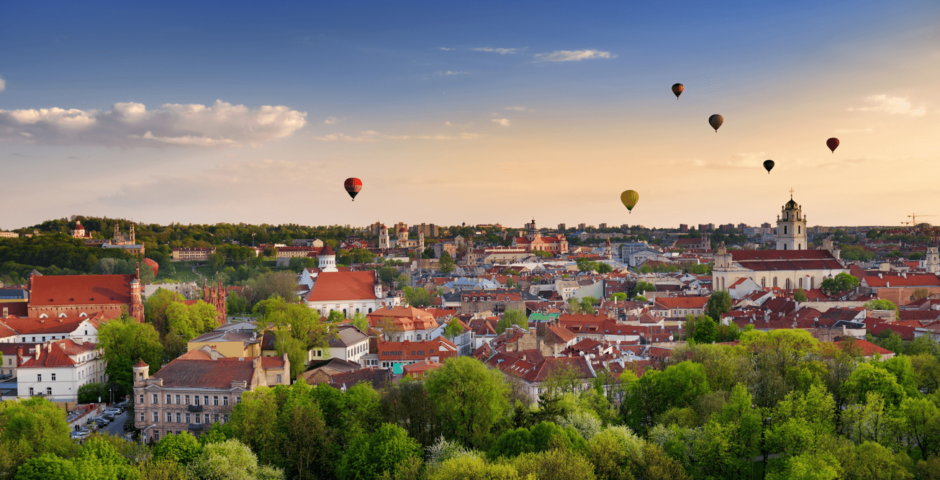
A small but brave country where security is not a given.
Lithuania, the southernmost country of the three Baltic States consists largely of forest. Where the capital Vilnius is also known as the “Rome of the Baltic States” and one of the few capitals you can fly over in a hot-air balloon. It is a country where basketball has almost been elevated to a religion and the national dish, Cepelinai, is zeppelin-shaped dumplings. Where the town of Radžiulaiai is (according to some) the geographical centre of Europe. The only country in the world with a national fragrance that was developed because creator Dainius Rutkauskas felt Lithuania lacked its own identity. These are all fun facts about EU member state Lithuania, which is the focus of this country profile. Read on to learn all about the national and European politics of this Baltic state.
An identity of bravery
A character trait commonly associated with Lithuania is bravery. In 2008, Lithuanian communication specialists came up with the slogan “Lithuania: a brave country” as part of nation branding – an attempt to give a country an easily recognisable identity. This proved to be a very appropriate label for Lithuania and, especially since 2020, is recognisable in various political activities of the country.
Despite Lithuania’s modest population of less than three million, or 0.6% of the entire European Union (EU), they are fearless in taking clear positions against autocratic countries such as Belarus, China and, notably, Russia. It began in August 2020, following the fraudulent elections in Belarus, after which Lithuania received Belarusian opposition leader Svetlana Tichanovskaya and allowed her to set up her government in exile in Vilnius. A year later, in November 2021, the Taiwan Representative Office was opened in Vilnius for Taiwanese representation in Lithuania. This is noteworthy, as the country chose the designation “Taiwan” instead of the widely used and generally safer “Taipei”. It caused a diplomatic row between Lithuania and China, which you can read more about in this article.
The main test of Lithuanian prowess came in February 2022 with the Russian invasion of Ukraine. While feelings of shock prevailed in most European countries, it was fear in Lithuania; the country has a long history of Russian (or Soviet) occupation and also shares a border with Russia. Lithuanians responded by welcoming Ukrainian refugees, organising humanitarian aid, and raising money to support the Ukrainian army. In addition, Lithuania was the first country to close its airspace to Russian aircraft. In May 2022, the government passed a resolution labelling the war as genocide and Russia as a terrorist state.
National politics of Lithuania
Lithuania is a country in north-eastern Europe and part of the Baltic States. The country borders Latvia, Poland, Belarus, and Russia on two sides, both the mainland to the east and the exclave of Kaliningrad to the west. Throughout history, Lithuania has been occupied several times by neighbouring countries; the most recent occupation was under the Soviet Union and lasted almost 50 years. On 11 March 1990, Lithuania declared itself independent after the newly elected parliament voted unanimously to do so. The current Lithuanian constitution was adopted by a national referendum in 1992.
In the years following the declaration of independence, conservative and socialist parties dominated Lithuanian politics. Between 1996 and 2001, the political climate was characterised by instability and several cabinet changes took place. Since 2001, centre-left and centre-right cabinets have alternated in power. Lithuania is a parliamentary democracy where the parliament is called the Seimas. From this parliament, a government is formed and elected for four years. The Seimas has 141 members elected through a mixed electoral system. Elections are held in 71 constituencies. From each constituency comes one candidate who must be elected by an absolute majority. If there is no such majority, a second round follows between the two candidates who obtained the most votes. The remaining 70 members are elected by proportional representation, which means seats are distributed based on the number of votes obtained by a party.
The president is elected by the people every five years and can be re-elected once. In 2019, centrist independent politician Gitanas Nausėda was elected president. His duties mainly focus on overseeing foreign affairs. The prime minister, formally appointed by the president, oversees day-to-day political activities and is generally the leader of the largest party in the Seimas.
After the 2020 elections, Ingrida Šimonytė and her Christian Democratic Party Tėvynės Sąjunga – Lietuvos krikščionys demokratai (TS-LKD) formed a government together with the centre-right, pro-European Laisvės partija and the centrist Liberalų sąjūdis. In contrast, the peasant people’s party Lietuvos Valstiečiu Liaudininku Sajunga, known as anti-establishment, lost many seats which could be explained by the party being criticised for its handling of the COVID pandemic. However, this loss can also be seen as part of a larger movement towards progress and freedom. In particular, parties with ideologies focusing on liberalism and European integration did well in the last elections.
2024 will be a busy year of elections for Lithuanians. In addition to the European elections, both presidential and Seimas elections will take place this year. Election time will kick off with the presidential elections taking place on 12 May with, if necessary, a second round following two weeks later. However, this is not expected to be necessary as the current president, Gitanas Nausėda, is the clear favourite for now. The European Parliament elections are on 9 June and the election year ends on 13 October with the Seimas elections. A political shift is expected to take place within the Seimas, though, as the social democratic party Lietuvos socialdemokratų partija is rising hard in the polls. Even so, the elections are still far away and obviously, anything can still happen.
Lithuania and the European Union
Lithuania applied for European Union membership on 8 December 1995, after which formal negotiations began on 15 February 2000. On 1 May 2004, Lithuania officially joined the EU, during the largest phase of enlargement the Union had seen until then. Before accession, the country had held a referendum in May 2003 in which Lithuanians could vote on joining the EU. 91% of those who voted were in favour of EU membership. This positive attitude towards the EU is still reflected today; around 60% of Lithuanians still favour EU membership, compared to a European average of 47%.
Lithuania has 11 seats in the European Parliament. In addition, the country has presided over the Council of the European Union once; from July to December 2013. The next time Lithuania may hold this role again is in 2027. Lithuanian politician Virginijus Sinkevičius is currently a Eurocommissioner for Environment, Oceans and Fisheries. Lithuania also joined the eurozone in 2015, with the euro replacing Lithuanian litas as the national currency.
Even though membership of the EU has brought much good to Lithuania, it has also contributed to an ever-growing problem; Lithuania’s population is shrinking rapidly. Whereas the country still had a population of 3.04 million in 2011, that number has decreased in ten years to 2.8 million people by 2021. This puts the country against the global trend of population growth. While there is no single answer as to why this is happening, it is plausible that free travel within the EU is a major reason. The high quality of education in Lithuania, combined with the attention paid to learning the English language, causes many young Lithuanians to leave the country for better opportunities in other EU countries.
2019 European elections
The previous European Parliament elections were held in Lithuania on 26 May 2019. The Christian Democratic Party TS-LKD became the largest, gaining three of the eleven seats, one more seat compared to the previous elections. In total, eleven political parties and five visuomeninis rinkimų komitetas (public committees); interest groups that do not belong to a political party, competed for seats in the European Parliament, seven of which got one or more seats. What is striking is that none of the parties that participated in the elections – whether they won seats or not – belonged to the eurosceptic, far-right European political group Identity and Democracy. More on the different political groups will come by in a future article, so stay tuned! The full result looked as follows:
| Party | Number of seats |
| TS-LKD – Tėvynės sąjunga – Lietuvos krikščionys demokratai (Christian Democrat) | 3 (18,67%) |
| LSDP – Lietuvos socialdemokratų partija (Social Democratic) | 2 (15,02%) |
| LVŽS – Lietuvos Valstiečių ir Žaliųjų Sąjunga (Conservative) | 2 (11,88%) |
| DP – Darbo partija (Social liberal) | 1 (8,50%) |
| LRLS – Lietuvos Respublikos liberalų sąjūdis (Liberal) | 1 (6,24%) |
| VKM-AMT – Visuomeninis rinkimų komitetas „Aušros Maldeikienės traukinys“ (Christian Democrat) | 1 (6,16%) |
| LLRA-KŠS – Lietuvos lenkų rinkimų akcija – krikščioniškų šeimų sąjunga (Conservative) | 1 (5,21%) |
| LCP – Lietuvos Centro Partija (Centric) | 0 (4,85%) |
| VKM-PRPJ – Visuomeninis rinkimų komitetas „Prezidento Rolando Pakso judėjimas (Right-wing conservative) | 0 (3,78%) |
| VKM-VRSV – Visuomeninis rinkimų komitetas „Vytautas Radžvilas: susigrąžinkime valstybę!“ (Conservative) | 0 (3,17%) |
| TT – Partija Tvarka ir teisingumas (Right-wing conversationalist, Euroskeptic) | 0 (2,59%) |
| LSDDP – Lietuvos socialdemokratų darbo partija (Social Democratic) | 0 (2,23%) |
| LŽP – Lietuvos žaliųjų partija (Green) | 0 (2,14%) |
| LLS – Lietuvos laisvės sąjunga (Liberal) | 0 (1,81%) |
| Visuomeninis rinkimų komitetas „Stipri Lietuva vieningoje Europoje“ | 0 (1,26%) |
| Visuomeninis rinkimų komitetas „Lemiamas šuolis“ | 0 (1,07%) |
Turnout rates for the European Parliament elections have been slightly above the European average of 42.61% and 50.66% in the past two elections, 47.35% in 2014 and 53.48% in 2019, respectively. This increase can be explained by the use of public campaigns to get Lithuanians to the polls. The symbol of the campaign was a potato on a bench, along with the text “Pakelk savo bulvę nuo sofos” which means something like, “Don’t be a couch potato”.

“Pakelk savo bulvę nuo sofos”: “Don’t be a couch potato” (source: fabula.lt)
Lithuanians were made aware of the importance of the EU through information campaigns on social media. Well-known Lithuanian influencers shared their experiences of EU membership and its benefits and discussed the functions of the European Parliament. In addition, the elections were also integrated into well-known Lithuanian talk shows such as Laikykitės Ten su Andriumi Tapinu and Kitokie Pasikalbėjimai. In total, around 2.5 million people were reached by the campaign, which is quite impressive considering that the country has a total population of just under three million. The campaign also received international recognition; it received the award for best communication campaign of the year in the Baltic States at the SABRE Awards 2020, the first prize in the “Public Institutions” category at the European Excellence Awards in 2019 and was a finalist at the New York Festivals Advertising Awards.
Upcoming elections: What can we expect from Lithuania?
As mentioned earlier, Lithuania’s European Parliament elections will take place on Sunday 9 June. This date has led to discussions among various parties in the Seimas. According to Saulius Skvernelis, leader of the Democratic Union for Lithuania, the fact that the presidential elections are on a different day from the European elections creates an advantage for the incumbent Christian Democratic Party TS-LKD. He argues that, after the presidential elections held on 12 May and a possible second round two weeks later, many people will not feel like voting for the European Parliamentary elections as well. A low turnout could then work in TS-LKD’s favour, as the party has a loyal constituency that always turns up.
Although little attention is currently being paid to the European elections in Lithuania, it is not surprising that security will play a crucial issue. Although the war in Ukraine sometimes seems to fade into the background because of all the other problems in the world, Lithuania continues to support Ukrainians through thick and thin. In 2022, the country spent 1.42% of GDP supporting Ukraine, making Lithuania one of the largest donors in terms of the percentage of the country’s total income.
Looking at the history of Russian occupation, it is not surprising that Lithuania places so much value on unconditional support to Ukraine. After all, the country borders Russia on two sides, making Lithuania especially vulnerable to a possible attack. Added to this is the threat from Belarus and, although to a lesser extent, China. The brave country of Lithuania will not give in easily, but it needs support from the EU to do so. The issue is therefore expected to play a central role in the June elections.
Sabine Herder has a master’s degree in Crisis and Security Management from Leiden University and is now doing a master’s degree in European Policy at the University of Amsterdam. Before this, she did a bachelor’s degree in Liberal Arts and Sciences with a major in International Relations.
Header image: Shutterstock
In-text image: Fabula.lt


